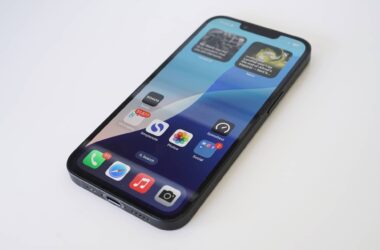It’s a new year, and that means you can start the year with a clean slate, and yesterday’s tech troubles in the past. So how do you get started?
Get your screen fixed
We’ve seen so many cracked screens over the holidays that it seems like the perfect way to start the year would be to have a new screen, and that might mean dropping it into a repair shop.
It’s not just phone screens, by the way. While a broken iPhone screen is clearly more obvious than other devices, we’re talking screen repairs of all sorts, including
- Smashed Androids that could do with a drop-in at the local repair shop
- Damaged iPad screens that might want to see the Genius Bar, and
- Broken computer screens that might be fine as far as glass is concerned, but are clearly frustrating the OCD in you with a line of pixels somewhere down the middle
Getting your screen fixed is kind of like putting on a fresh pair of linens, and starts the year off on a good bill of health. Get it sorted in the first week of the new year to feel a bit better about the technology in your life, and maybe consider some protection for that device ASAP to keep it that way.
Sort your streaming plans out
Most of us are streaming music from at least one service, but if you’re in a relationship or living with someone else who is streaming, you might want to collect the two services and go under a family account.
As the name suggests, family accounts are made for families, or at least intended for them, and bundle up access for up to six accounts for a lower price.
With one streaming music account likely to cost $11.99 and six bringing that cost to $71.94, you might be surprised to learn that a family account is typically $17.99.
That’s a staggering difference, and one that you can seriously save with.
In a family account, the accounts are technically all independent with their own likes, dislikes, playlists, and songs, but the account payment is managed by one user, essentially the parent.
But family accounts don’t need a parent per se, and can just be the person paying, making them suitable for a couple or people living in the same house.
And that money starts to add up, so this is one tip worth checking out.
Start backing up
Once you have that family account sorted, you may want to use it for other things, such as backing up.
For instance, a family account on iPhone and iPad can be extended to the online storage quota, and allow everyone in that family to have their devices backed up to the cloud. Photos are part of that, as are apps and such, so it makes it a worthwhile option.
Alternatively, we’d just settle for a regular backup routine, and that might be easier with a NAS.
Also known as “Network Attached Storage”, this is a hard drive that sits in your home plugged into your network that you access using WiFi or a wired network point.
Computers can back up to it, and so can phones and tablets, too, with apps able to back up photos and videos from your phone without you having to think about it.
If you’re not a fan of storing things on the cloud, adding a NAS to your home means the backups can still occur, but they just remain local to you. And if you want to access those backups remotely, many network devices can cater for that these days, too.
Change your passwords
One more thing might make you feel a little safer and clearer with the start of the new year, and that’s a fresh set of passwords.
It might seem a little crazy, but all sorts of nefarious types are likely trying to get into your accounts, so being on alert and doing your part to make it more difficult for them might just help you in the long run.
For starters, make sure your password isn’t obscenely easy. We’re talking no “password123” or “batman123”. Pretty much anything with “123” needs to be removed from your password vocabulary as fast as possible.
Instead, try picking a phrase only you would know, and changing some of the characters.
For instance, if a phrase you happened to like was “love our honest life”, it might be the phrase all pressed together, but with zeros replacing any o with an exclamation point on the end to read as “L0ve0urh0nestlife!”.
That can act as the base password, but you’ve probably heard that every password should be different, so to make a password unique for a website, consider adding some initials at the end to not only make it longer, but also highly specific to a website or service. If your password as “L0ve0urh0nestlife!” and you were modifying it for Twitter, it might become “L0ve0urh0nestlife!Tw!” to be focused specifically on Twitter, or “L0ve0urh0nestlife!fb” for Facebook.
Passwords are already complicated enough at the best of times, and while they’re typically suggested as nonsensical combinations of numbers, letters, and symbols, this can at least bring some semblance of logic back to password making while keeping things easy(ish) to understand.








